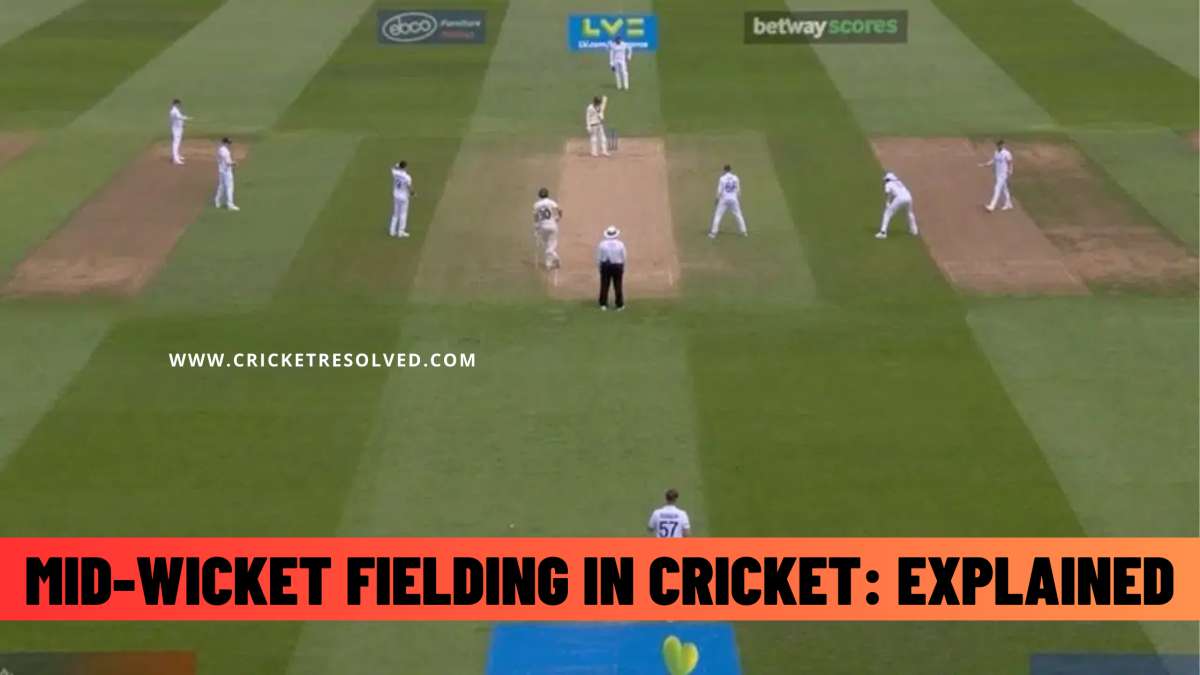
The cricket field is generally oval with two parts, the off and leg sides. 2 batsmen, 2 umpires, and 11 fielders for a team are in play at any given time. Choosing the right fielding positions can determine the outcome of a cricket match.
Many fielding positions in cricket have their own terminology. Mid-wicket is the area of the ground in cricket that is halfway up the leg side of the pitch, about 45 degrees in front of the square.
The fielder stands 25 to 30 yards from the batsman’s crease; their main responsibility is to prevent the ball from reaching the boundary. Mid-wicket fielders are also well placed to take catches from batsmen trying to hit the ball on the leg side.
Basic Positioning and Role
Mid-wicket fielding entails the fielder standing in a position that allows them to cover the area between square leg and mid-on. The precise positioning will differ depending on the batsman’s habits, pitch circumstances, and match situation. A skilled mid-wicket fielder should be agile, fast on their feet, and anticipate well.
A mid-wicket fielder’s major task is to limit scoring opportunities on the leg side. This entails stopping batters from simply rotating their strikes and, in some situations, creating run-out opportunities.
Mid-wicket is also an important position for catching batsmen off guard when they play across the line and attempt shots through the leg side.
Mid-Wicket Area Usage
Mid-wicket fielders are typically used while bowling from over the wicket. The reason for this is that bowlers who are bowling over the wicket like to bowl more balls to the leg side.
When the batsman is known to play a lot of strokes on the leg side or when it is anticipated that the ball will swing or seam towards the leg side, midwicket fielders are also placed in that area.
Types of Mid-Wicket Fields
There are two main types of mid-wicket fields: deep mid-wicket and short mid-wicket.
The deep mid-wicket fielders stay close to the boundary line, and their main responsibility is to stop the ball from reaching the boundary.
Short mid-wicket fielders stand close to the batsman’s crease and their main responsibility is to take catches from batsmen who are trying to hit the ball at the leg side
Skills a Mid-Wicket Fielder Needs
Mid-wicket fielders need good fielding skills.
For catching: The mid-wicket fielders should be able to catch the ball well, even if it is hit hard and high.
For ground fielding: The mid-wicket fielders should pick up the ball quickly and accurately, even when it bounces off the ground.
Midwicket players need to be quick and athletic to get around the field quickly.
Final Thoughts
A good fielder at mid-wicket can change the course of a game by restricting the number of runs the opposition can score and making significant strides. As the game progresses, excellent fielding — especially at the mid-wicket area —becomes more crucial, and it is consequently one of the most crucial aspects in deciding which team will win.



Leave a Reply